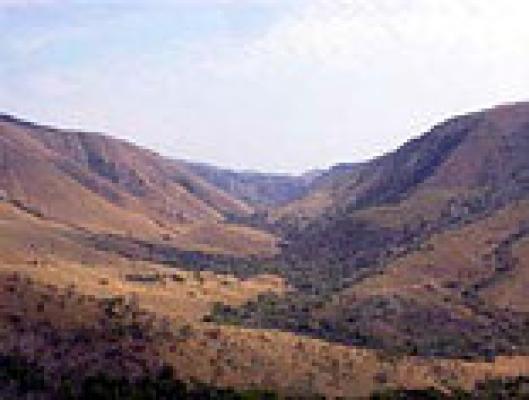In the beautiful De Kaap Valley where Barberton is situated, some of the oldest sedimentary rock formations in the world are found. The promise of rich gold deposits lured diggers in their thousands to this valley in the 1880's. Among those who came to the valley were Graham Barber from Natal, and his cousins Fred and Henry Barber.
In June 1884, they found what they named "Barber's Reef" a reef so rich that it sparkled in the sun. A flood of diggers arrived, and a motley collection of shacks, stores and canteens sprang up.
On the 24th of June 1884, David Wilson, mining commissioner of Kaapse Hoop, broke a bottle of gin over a rock to christen the town and Barberton was launched on a lively career.
Activities
* Belhaven House Museum
This house museum which has been restored and furnished to its original appearance in 1904, depicts the life style of a family from the wealthy middle class during the late Victorian/Early Edwardian periods.
* Stopforth House
The original wood and iron house and outbuildings (stable, woodwork shed and outside bedroom) were built in 1886 by James Stopforth, a Baker and General Dealer. The house, which was rebuilt in 1892, was occupied by the Stopforth family until 1983.
* Fernlea House
This wood and iron house was built in the early 1890's by Thomas Lee and is presently used for temporary exhibits.
* Block House
The building material and construction of this fort, which dates from 1901, resembles the earliest type of blockhouse erected in South Africa.
* Globe Tavern
After the "Globe" had been restored by Mr. Louis Barnes, it was declared a National Monument in 1979. It was built in 1887. It is not open to the public.
* Lewis and Marks Building
Sammy Marks and his cousin, Isaac Lewis, established a company which later became an important undertaking in the Z.A.R. in the field of mining, agriculture and industry. It was the first double-storey building in Barberton and was built in 1887 by J J Kirkness for the above-mentioned company.
* Masonic Temple
This neo-Gothic building was originally the Union Church. It dates from 1884. In 1887 it was taken over by the Lodge of St. John in the South.
* Jock of the Bushveld Statue
This statue is a memorial to that most indefatigable of dogs, Jock, who belonged to the transport rider Percy Fitzpatrick.
* Hiking Routes:
- Fortuna Mine Tunnel route. 2km. Torch necessary. Picnic facilities.
- Rose's Creek walking route 1.5 km. Picnic facilities.
* Steam Locomotive
This locomotive was in service on the railway line between Barberton and Kaapmuiden in about 1899.
* The Garden of Rememberance and Regimental Badges
During the Second World War a large military camp was established to the northeast of the town. Many famous South African units passed through the camp and to mark their stay erected replicas of their regimental crests and badges in the camp.
All the remains of British servicemen and women who fell in the Lowveld during the South African War 1899-1902 are buried in a cemetery next to the previously mentioned camp site. The whole area is now maintained as a garden of remembrance.
* Baberton Daisy
A famous indigenous plant, the first specimen of which was sent to England in 1884. The crimson hued Pride of de Kaap is another well-known local plant.




